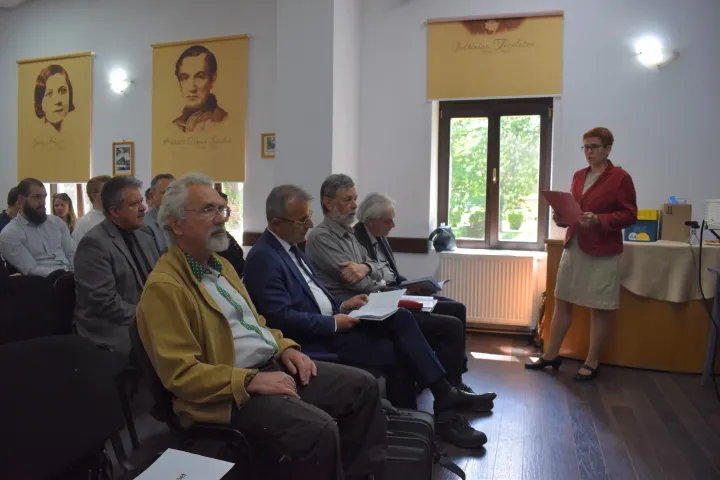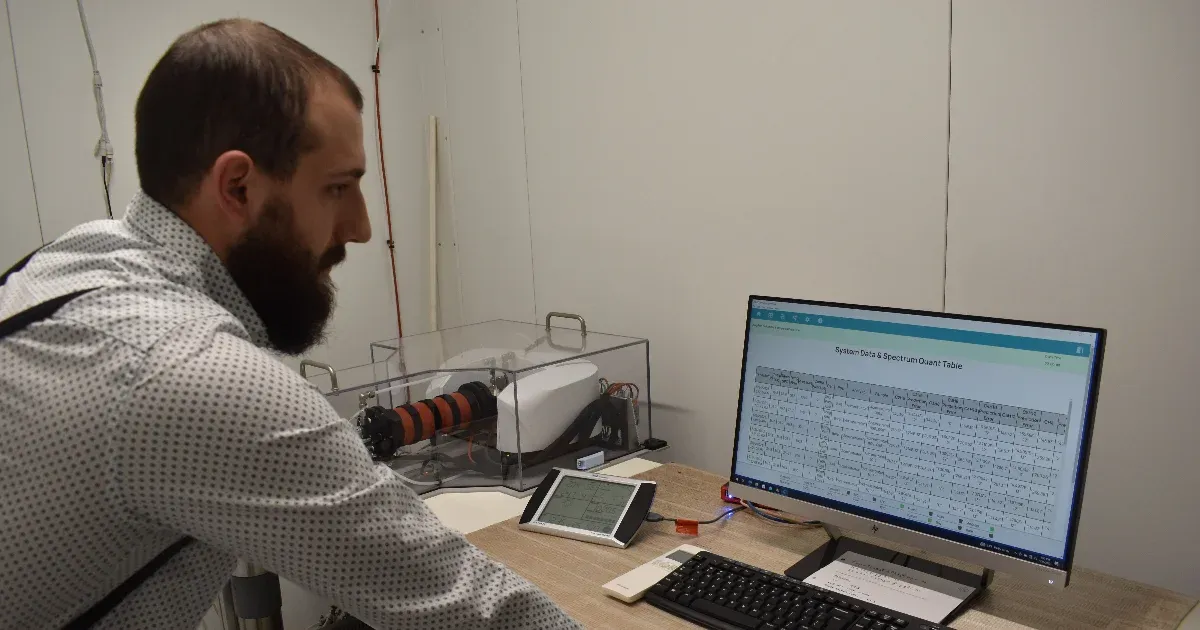Kovászna is famous as a medical center of national interest. The city is known far and wide for its heart hospital, but it also has diverse natural resources. Those who come here are greeted with mountain landscapes, movita, mineral waters and air rich in negative ions. The gases that seep to the surface, such as carbon dioxide, have a great impact on the life of the town and its inhabitants from a medical and tourism point of view. Recently, not only has the heart hospital lab been gathering data on gases used in medicine, but researchers’ fantasies have begun to run more deeply into what exactly is under the feet of the inhabitants of Kovasna.
This is one of the reasons for the construction of the city’s scientific monitoring station on the Carpathian Curve, the official handover of which took place on Thursday at the Municipal Cultural Center in Covasna, including the former and current Institute of Geophysics in Bucharest (INCDFP), the Research Institute of Geophysics and Space Sciences (FI). ) in Sopron, in the presence of his colleagues and researchers involved in the establishment of the station and the administration of the city of Kovaszna. We had already spoken to one of the center’s researchers regarding the earthquake in Turkey, the facility was not operational yet, but they had already told us that the integrated geodynamic station would be important not only because of the investigation of medical gases, but also that they could make a breakthrough in terms of earthquake prediction. with measurements here.
Kovačna Cultural Center – Image: Hunor Tőkés / Transtelex
The handover took place as part of a mini scientific conference, where Mircea Radulian, former scientific secretary of INCDFP, said the Carpathian bend is one of the most tectonically dynamic regions in Europe. The carbon dioxide emission of Kovaszna and its surroundings is the most intense invasive upwelling of this type in the entire Carpathian-Panun region. Thus the Carpathians are an excellent natural laboratory for large-scale earthquakes that have a great impact on society.
Istvan Janos Kovac, a researcher at the Sopron Research Institute of Geophysics and Space Sciences, added that Kovaczna seems to be a very suitable place from a geological point of view, to see “movements” through careful and comprehensive monitoring of liquids / gases. which occur under our feet, are imperceptible to human senses, and can prevent earthquakes of various depths and magnitudes. According to him, the Integrated Geodynamic Gas Analysis Station will investigate exactly how the fluids/gases present in the solid rock slabs affect the stresses built up in the rock slabs, as well as how observing them at the surface can help us learn about these processes.
We’ve had a look at the container-looking metering station for ourselves
After the lectures, Ákos Kővágó, PhD student at Eötvös Loránd University, visited the gas analysis station, which was set up in the area of the Reformed Church, which looks a lot like a container, but as we learned from the PhD student, although not very striking to the layman’s eye However, the interior of the Scientific Observation Station in Kovaszna is the latest and is equipped with technology, which also includes a meteorological station, but its main purpose is to identify changes over time in carbon dioxide-rich gases that escape from the Earth’s interior to the surface, because the gases It can play a role in the formation of earthquakes.

The probe being used to extract the gases required for the test – Image: Tőkés Hunor / Transtelex
The research station was built for 530,000 lei (40 million forints) and thus:
- Measures wind speed, temperature, humidity and precipitation with devices on the top and sides.
- With the help of a stainless steel probe lowered 80 cm into the ground next to the container, the researchers took soil air samples, which are then measured using an infrared spectrophotometer.
Observing the composition and yield of volatiles flowing from the Earth’s interior can play an important role in determining the geological processes that precede earthquakes and in better understanding the global carbon dioxide cycle. The newly installed Scientific Monitoring Station in Kovászna handles this investigation.
By the way, the measuring station was actually installed in February, so the data collected in the few months that have passed since then are awaiting evaluation by the researchers. For now, it is only a matter of the future when the station will contribute to identifying precursors of earthquakes in the geologically active area, with the help of data obtained from changes in gas concentration, among other variables.
Science has been interested in Kovászna gases for several decades
Sándor Gyila, “Dr. Geza Benedek, retired physicist at the Cardiovascular Rehabilitation Hospital, drew attention to the fact that Covaczna is the only city in Romania that has been constantly researching natural healing factors for 40 years. For this purpose, Covaczna Hospital has set up a medical climate laboratory Flour and carbon dioxide, in terms of atmosphere, mofettas (CO2gas baths) and environmental radioactivity (such as radon gas) have been subjected to scientific scrutiny.

From left to right in the first row are Sándor Gyila, Constantin Ionesco, Sándor Szakács, Mircea Radulian, in front of them is the moderator Ágnes Gál – Photo: Hunor Tőkés / Transtelex
However, the toolkit of scientific investigations will be greatly expanded by the ceremonial station delivered, which, according to Constantin Ionescu, Director of the Institute of Geophysics Bucharest (INCDFP), is due to the exceptional collaboration between INCDFP in Măgurele and the Research Institute for Geophysics and Sciences Space in Sopron. For some years now, the two institutes have been conducting joint research under the interdisciplinary Topo-Transylvania project.
This collaboration is a wonderful proof that the power and importance of science is capable of acquiring knowledge even by crossing geographical boundaries.
Constantine Ionesco stated. According to the director, in an increasingly interdependent and interdependent world, such partnerships are essential to address challenges facing humanity such as climate change, earthquakes and other natural disasters. By the way, the station is also part of the INCDFP network, which is the largest network in Europe.
The opening of a unique scientific and technological facility is important, but it can only be interpreted as the first step, said Sándor Szakács, an employee of the Institute of Geodynamics, after describing in detail the steps taken over the past eight years to establish the station. Further steps are needed to learn and understand the very complex dynamics of the Carpathian curve, which involves the source of the Francia earthquake, and to move closer to a possible solution to the complex problem of earthquake prediction.












































